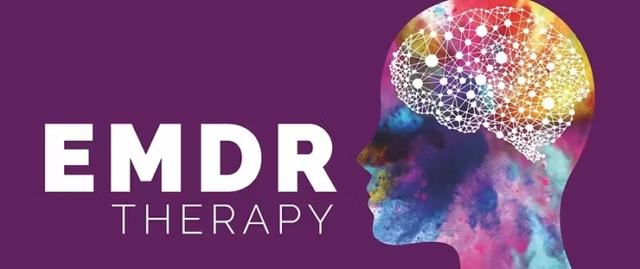Are you feeling disconnected in your relationship, stuck in negative patterns, or overwhelmed by emotion? Emotionally Focused Therapy (EFT) is a proven approach that helps couples and individuals break through emotional barriers and reconnect in deeper, more meaningful ways.
Backed by decades of research, EFT isn’t just another communication tool—it’s a way to heal the emotional bond that makes love and connection possible. This article will help you understand what EFT is, how it works, and whether it might be the right path for you or your relationship.
What Is Emotionally Focused Therapy in Carlsbad?
Emotionally Focused Therapy is a short-term, structured approach to therapy that focuses on repairing and strengthening emotional bonds. It was developed by Dr. Sue Johnson and is based on attachment theory, which teaches us that humans are hardwired for deep emotional connection.
Here’s how EFT can help:
-
Helps people recognize and express vulnerable emotions like fear, sadness, and longing
-
Breaks cycles of blame, shutdown, and miscommunication
-
Creates space for empathy, healing, and secure attachment
-
Builds stronger, more resilient relationships
EFT is widely used in couples therapy, but it’s also powerful for individuals and families struggling with emotional pain, trauma, or disconnection.
How Does EFT Help People Heal?
Emotionally Focused Therapy works by helping people feel safer, more open, and more connected—whether you’re in a relationship or coming to therapy on your own. It’s less about analyzing problems and more about changing how you feel in key moments, especially when things get tense or emotional.
The process moves through three simple steps:
-
First, we look at the pattern. Most couples or individuals fall into predictable loops—like shutting down, snapping, blaming, or chasing. These patterns keep people stuck, and the goal is to notice them without judgment.
-
Then, we explore what’s underneath. Instead of staying on the surface with frustration or anger, EFT helps you tune into the softer feelings underneath—like hurt, fear, loneliness, or the need to feel valued.
-
Finally, we practice new ways of connecting. When emotions are shared gently and honestly, and heard with openness, new conversations become possible. People start to respond differently—and relationships begin to feel safer and stronger.
It’s not about figuring out who’s right or wrong. It’s about seeing the emotions that drive the disconnection—and learning how to show up for each other in a new way.
Who is Helped by Emotionally Focused Therapy?
Emotionally Focused Therapy (EFT) is often sought out by couples in distress, but its impact goes far beyond traditional relationship counseling. This approach is designed for anyone who feels stuck in patterns of emotional disconnection—whether that’s with a partner, a family member, or even within themselves.
Many people who benefit from EFT describe feeling like they’re having the same fight over and over again, or like they’re never truly heard or understood. Others find themselves shutting down or pulling away emotionally, even when they don’t want to. Still others wrestle with the lingering effects of old emotional wounds—moments of rejection, abandonment, or trauma that still echo in the present.
EFT creates space for healing by helping people understand and respond to these emotional patterns in a new way. At New Growth Counseling, we use EFT with individuals, couples, and families who want to move beyond emotional pain and create more safety, connection, and clarity in their relationships.
What to Expect in a Typical EFT Therapy Session
What Is Emotionally Focused Therapy in Carlsbad like? If you’ve never been to therapy—or if you’ve tried it before and felt like it stayed too surface-level—you might wonder what makes EFT different. In an EFT session, the focus is not just on solving problems or improving communication. Instead, it’s about understanding the emotions underneath those problems, and creating space for vulnerability, healing, and change.
A typical session begins by slowing things down. Together with your therapist, you might notice patterns—like moments when one person shuts down, or when another becomes reactive or critical. But instead of getting caught up in blame, the work turns toward what’s really happening underneath.
You may explore softer feelings: fear of being rejected, sadness over not feeling important, or frustration at being misunderstood. You’ll learn how to name those emotions, express them in a safe way, and hear your partner (or yourself) differently in the process.
Over time, new interactions emerge—ones built on empathy, presence, and genuine emotional contact. That’s the heart of EFT: helping people reconnect in a way that feels secure and deeply human.
The Science Behind Emotionally Focused Therapy
EFT isn’t just based on theory or intuition—it’s one of the most well-researched approaches to relationship and emotional healing. Numerous studies have shown that EFT significantly improves relationship satisfaction and emotional regulation, with benefits that last well beyond the final therapy session.
According to extensively published research, over 70% of couples who complete EFT successfully move from high distress to recovery. And nearly 90% report noticeable improvements in their relationship. Even more encouraging, those gains are typically sustained over time—even when new challenges arise.
EFT has also been adapted for individual therapy and has shown promise in helping people manage depression, anxiety, and the aftereffects of trauma. What makes it so powerful is its focus on emotional safety and connection, which research shows is one of the most effective pathways to long-term change.
How to Know if EFT Is Right for You
You don’t have to be in crisis to benefit from Emotionally Focused Therapy. In fact, some of the most meaningful breakthroughs come from people who simply feel a quiet ache—like something is missing in their relationship, or they’re stuck in patterns they can’t quite name.
EFT may be the right fit if:
-
You and your partner keep having the same fights without resolution
-
One or both of you feels distant, shut down, or emotionally overwhelmed
-
You long for more intimacy, safety, or emotional connection
-
You’ve experienced pain in past relationships that still affects you
-
You want to understand your own emotions better and relate to others more deeply
One of the gifts of EFT is that it doesn’t demand perfection or quick fixes. It invites honesty, compassion, and the courage to be emotionally present with yourself and others. And often, that’s where healing truly begins.
Final Thoughts: Emotional Healing Starts with Connection
Emotionally Focused Therapy offers a way out of the patterns that keep you distant, disconnected, or discouraged. It helps you feel seen, heard, and understood—by your partner, your family, or even yourself. At its core, EFT is about repairing the emotional bond that allows people to love and be loved safely.
Disclaimer:
This article is for informational purposes only and does not constitute mental health advice. For personalized support, please contact a licensed therapist. If you’re experiencing emotional distress, reach ot to us now to begin your healing journey.


